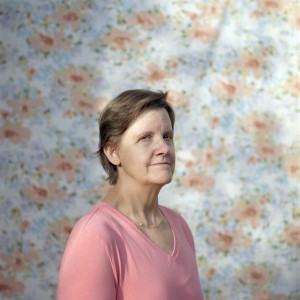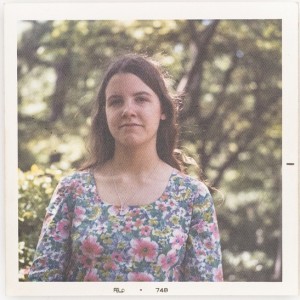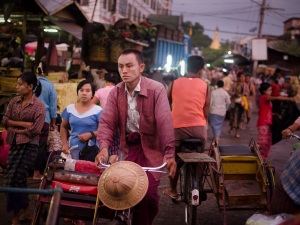Gazing Within
by djasonhorvath
The eyes have always been said to be windows into the soul, and Leslie Hickey and Geoffrey Hiller both utilize the gaze of the eyes to carry the weight of their work.
 Leslie Hickey’s collection “Tokyo/Portland” is unassuming and quiet in its appearance. Seemingly set in pairs to show the passage of time between her parents travel to Tokyo decades ago and their lives in Portland today. The two images of her Mom represented this collection with the strongest pairing. The past linked to the present through the fabric of a dress, one can see an emotional imprint on the face of her Mom, standing the test of time. The laissez faire smirk hasn’t been skewed with age, the eyes still full of observation and curiosity, the feeling of “whatever” sitting comfortably on her cheeks giving an impression of grace and openness.
Leslie Hickey’s collection “Tokyo/Portland” is unassuming and quiet in its appearance. Seemingly set in pairs to show the passage of time between her parents travel to Tokyo decades ago and their lives in Portland today. The two images of her Mom represented this collection with the strongest pairing. The past linked to the present through the fabric of a dress, one can see an emotional imprint on the face of her Mom, standing the test of time. The laissez faire smirk hasn’t been skewed with age, the eyes still full of observation and curiosity, the feeling of “whatever” sitting comfortably on her cheeks giving an impression of grace and openness.

Looking at the picture of “present” Mom, I can appreciate the beauty of the person. But seeing her alongside her past self, I recognize a commonality to her spirit, driving her curiosity. It’s not the curiosity to attain and possess knowledge, but the curiosity to experience knowledge. The mom confirms this attitude in a statement when responding to the question of whether she would go back to Japan, she “…emphatically said no. There are other places to see.” It is within this statement expressed so clearly in the gaze, captured perfectly and directed toward the audience that starts to reveal the strength of meekness.

Geoffrey Hiller’s work “Myanmar in Transition 1987-2013” is big, though not necessarily in physicality. It needs room to allow the weight of the image to sit comfortably and the collection feels cramped within the drawers. The bright, bold colors of the street photography capture a people and place that few of us get to experience. The images don’t fall within the expected trappings of journalism or in the aesthetic justification of a foreign culture by a tourist. Instead they come across as a meditation.

A reflection on transition, the moment where on one hand you are helplessly being swept along the chaos of history and on the other hand you stand at a precipice of change that only the individual could facilitate. It’s this momentary flash of both vulnerability and pride that I see in these images. The faces of the two individuals highlighted express such beautiful contemplation and burden, which makes me want to buy them a cold drink and sit with them quietly, giving them the peace of relaxation.
At first Hiller dominated the space, with size, color and tone. The pace and energy was overwhelming, pushing Hickey’s work out of my periphery. As I sat and took a moment to absorb the faraway looks in the faces of Myanmar, a surrendering of understanding overcame me and I recognized the voice of Hickey’s Mom looking over my shoulder, saying, “We all go through this.” The longer I sat, the strength of the quiet, smaller photos became evident as the boldness of Hiller’s work became relaxed. It’s within these expressive gazes of all four images that allow the audience to experience the confidence of time. The images are a catalyst to discovery, not just of a particular person or culture, but of ones own place in the timeless flow of existence. They are captivating in their differences, within which is provided a necessary moment of self-awareness. The only emotional comparison I can express is that of enjoying a Sunday brunch with an old friend, sitting outside, taking in the surrounding environment and quietly exchanging glances of remembrance to the past, never speaking a word but communicating through body language and appreciating the presence of a similar soul. I raise my glass with a solemn toast in appreciation to all that has shaped us into today.
